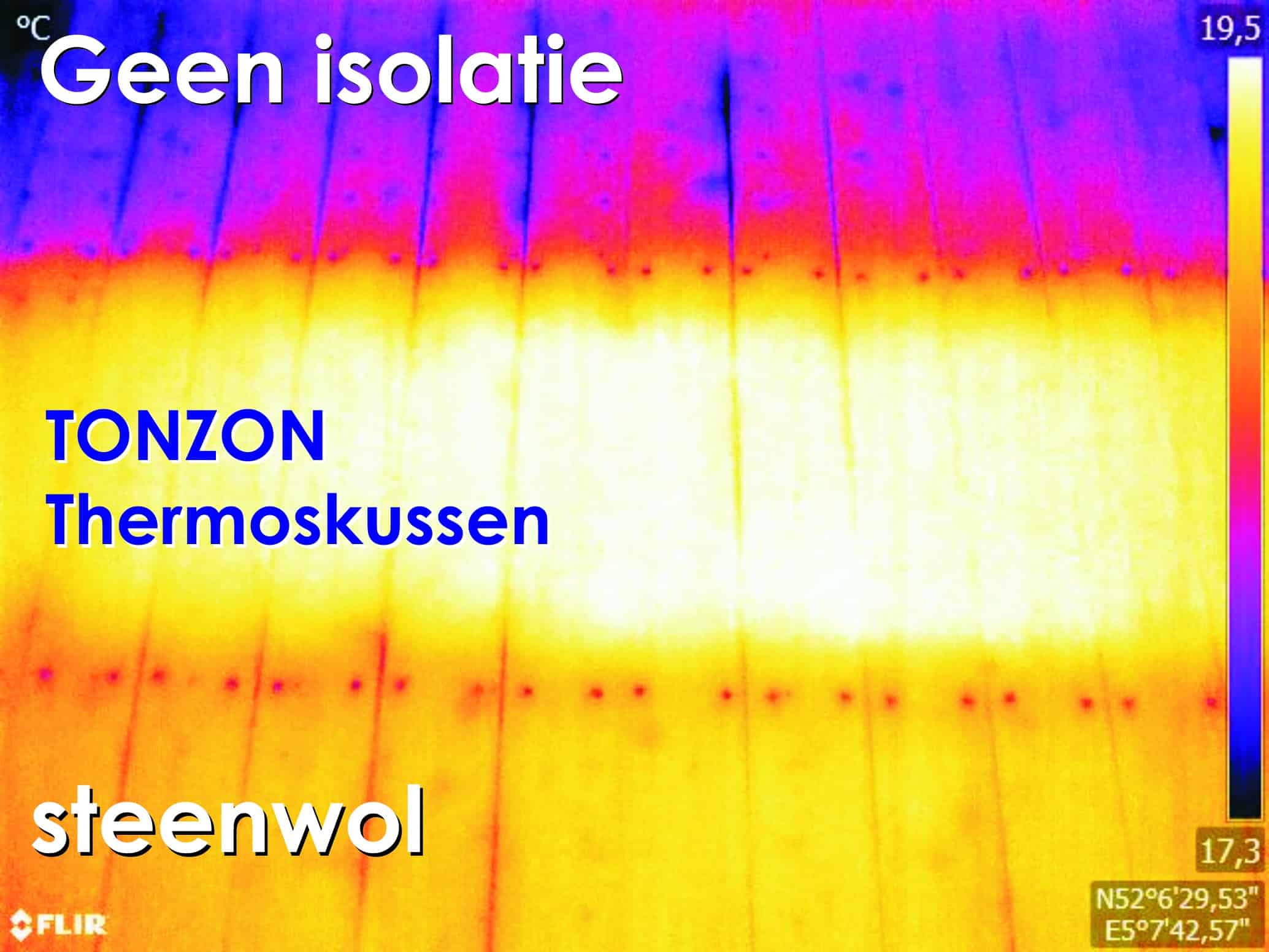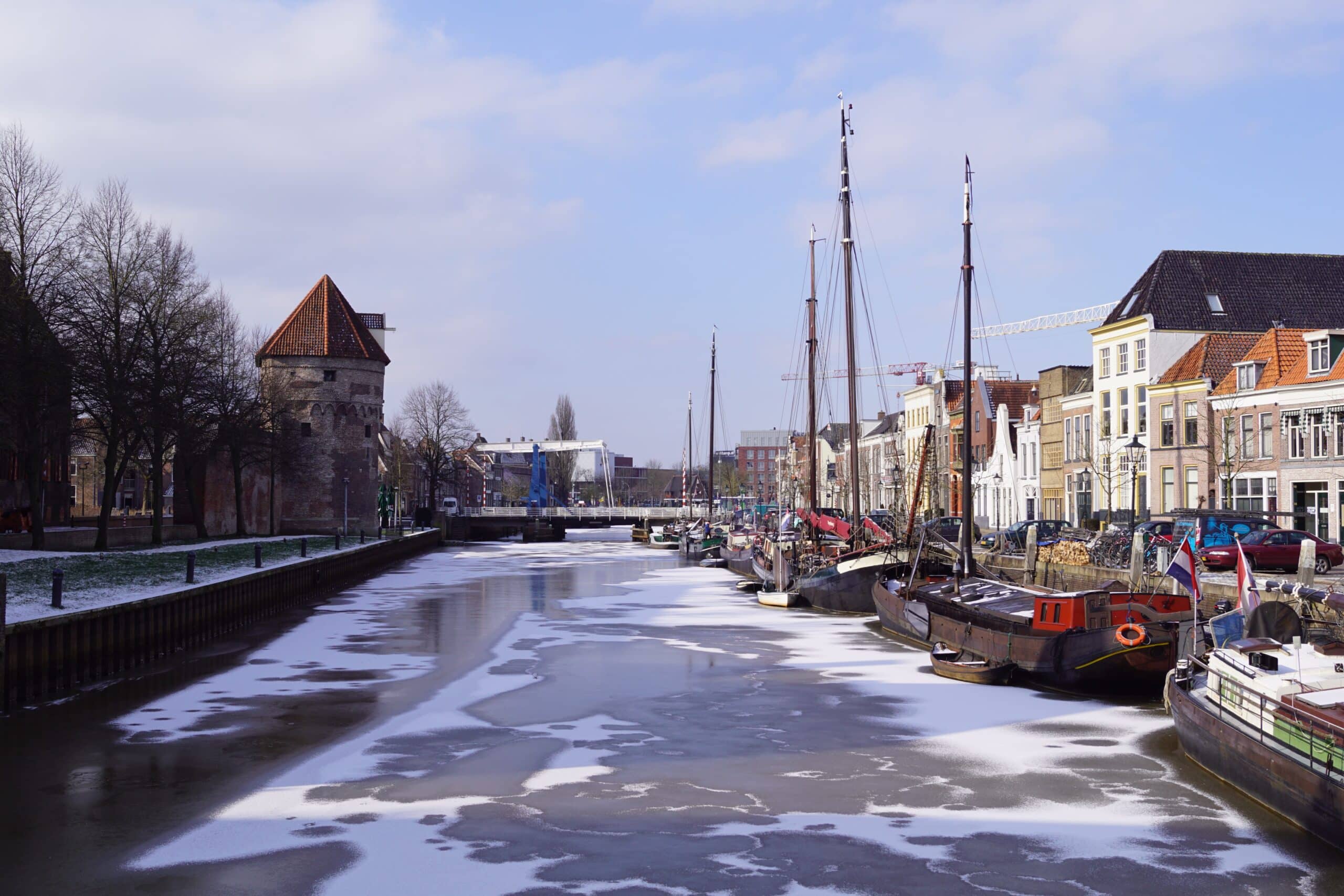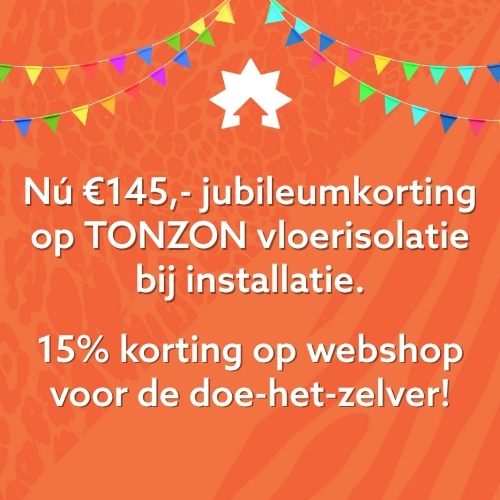
The entire TONZON process is better
Insulation board and mineral wool take up a lot of space. This is because the air is already trapped in the material, at the factory. So multiple truck deliveries are required, with trips both to and from the factory, in order to get the material to its destination. And underfloor installation is less straightforward when working with materials of such large dimensions. Mineral wool is also known to contain fibres that can irritate the skin. TONZON Thermos Cushions come in a wide variety of widths and unlimited lengths. The product can simply be folded into small packages, which can easily be moved into an underfloor crawl space. And air is trapped by the insulation material only after the Thermos Cushions are installed.
TONZON limits cold bridges
It is practically impossible to lay insulation boards or mineral wool seamlessly. There are thus always cracks and gaps in the insulating layer. TONZON Thermos Cushions can be easily joined with double-sided tape or aluminium tape, creating a seamless whole. This also makes mounting insulation in a crawl space a lot more efficient. Which, in turn, saves time and provides a better insulating effect.
TONZON - the most environment-friendly insulation
The Netherlands institute for building biology and ecology (NIBE) recently released a study on the environmental impact of floor insulation. This shows that TONZON Thermal Cushion floor insulation is still the most environmentally friendly floor insulation, providing homes with excellent insulation, yet using very little material. Low manufacturing material requirements mean low energy costs - in production, transport and installation. The result: no truck deliveries and a climate impact that is offset within weeks by the savings in energy consumption.
At TONZON, sustainability is key
.TONZON uses a dual approach. In addition to the Thermos Cushions, which are mounted against the underside of the floor, the bottom of the crawl space is covered with a sturdy soil foil. This stops the evaporation of moisture from the soil and inhibits the release of radon gas. This two-pronged approach costs a bit more, but has the advantages of preventing moisture from the soil entering the house, and a longer useful life for piping and suspension brackets. This approach also stops concrete rot.
Difference between TONZON and reflective, multi-layered foils
There are several products on the market that consist of several layers of film, sandwiched on top of each other and separated by foil air cushions and/or foam or wool layers. They claim the same insulating effect as TONZON but, in fact, their effect is not much different from that of foam board with reflective film on the outside. With these materials, a better insulation effect can only be obtained by increasing the thickness or depth of insulation, just as with foam boards or wool insulation. These materials also carry the disadvantage of large transport volumes. And as the material becomes thicker, it also becomes increasingly difficult to move it through trapdoors and into crawl spaces under the floor, for installation.
TONZON uses motionless air as insulation material
For ground floor insulation, a number of layers of air are trapped in the Thermos Cushions. Their special surface reduces heat loss through radiation to almost zero. This allows the floor to start accumulating the heat it receives from the room. The warmed floor, in turn, warms up the air layers in the Thermos Cushions, from above. The heated air has a tendency to rise, but cannot, as it is already trapped up against the floor by the cushions. Thermal stratification takes place in the Thermos Cushions, just as in a boiler. This means that the air is warmest at the top and gets gradually colder towards the lowest layers. This is known as stratification or layering. It is very difficult for heat to flow down through a stratified layer of air. And at night, when the heating is turned down, the heat at the top of the cushions rises again. So in the morning, the floor is again quickly warmed.

Superior performance - proved in practice
TONZON Thermos Cushions have a superior effect on floor temperature, not only in theory but also in practice, as demonstrated in several TV programmes.
In 2014, VARA Kassa Groen covered a situation in which a customer from Utrecht was not satisfied with the effect of mineral wool underfloor insulation. A number of strips of insulation wool were removed during a live TV transmission. These were replaced with a strip of Thermos Cushions. Thermal imaging showed that the mineral wool delivered some improvement, but the floor above the strip of Thermos Cushions was clearly warmer.
The floating home experiment
A similar case was covered by the RTL programme, Wist je dat? A floating home was extended with the addition of a second concrete float, the floor of which had been insulated with wool at the factory. In the living room, however, residents could feel no difference between the two parts of the floor. No difference in temperature was detected with a thermal imaging camera. The wool under the floor was bone-dry, so that offered no explanation. In a live TV broadcast, a few strips of wool were removed, and replaced with Thermos Cushions. This resulted in increased floor temperature in the floor area above the Thermos Cushions. View the TV programme here.






